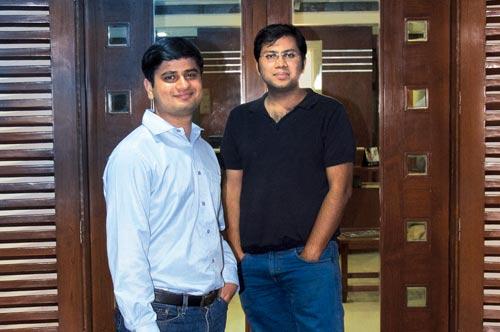What 'Wingify' Can Tell You About Taking Feedback
- BY Shreyasi Singh
 In Strategy
In Strategy 10470
10470 0
0

In October 2009, Paras Chopra was biding time at a Noida-based technology firm—he was sure his days as an employee were limited. Barely a year out of Delhi College of Engineering, Chopra was too busy to care. His attention was on the reams of code he was writing for a product he called Wingify—one that he had devoted his after office hours and weekends to write.
Wingify was a suite which could increase website conversion rates for companies. Chopra knew that the product would power his entrepreneurial flight—a feature-rich, jazzed-up platform which could give companies a one-stop repository for split testing, behavioural targeting, web analytics and visitor segmentation tool. “My research found that online marketers had to use five to six tool kits for their website functions to drive traffic or increase conversion. Wingify could do all that. It was very comprehensive,” he says.
An avid blogger, Chopra decided to showcase Wingify on an online open forum, Hacker News, where geeks converge. The reviews caught him by surprise. Contributors found the loaded product too confusing to navigate. As one reviewer put it, “It took me 14 page views and 1,738 seconds to find a product tour on page.” Plus, the product tour was heavy on technical jargon. For a tool that aimed to simplify matters and make website analytics easy to implement, this was particularly off-putting. “I had put zero thought in usability. I’d concentrated only on coding a plethora of features,” Chopra recalls. He’d also wasted up to six months of his time. “The feedback should have been taken while making the product, not after it was complete,” he confesses.
At the start-up level, the crowd approach has worked for us. We develop what our users want."- Sparsh Gupta
Though it was hard to start over, Chopra couldn’t launch with a product that potential users didn’t get anyway. He decided to re-code Wingify, refining and revamping the site’s usability, design and paring down its features to create a more effective program. “I focused on what the feedback told me. I made myself a goal—to keep the user interface as simple as possible. Users shouldn’t need more than three to four clicks to get the features they want.”
Five months later, a new and improved version—Visual Website Optimiser (VWO)—was born in its beta version. Sparsh Gupta, Chopra’s senior from college, and a Masters in computer science from Oxford, became an enthusiastic and keen sounding board through the re-work journey. Gupta also saw immense potential in the product. And the college buddies decided to become business partners. They called the firm Wingify Software and it went live as a paid product from May 2010.
Since then , the Visual Website Optimiser has seeded a business to watch out for. In the past year-and-a-half, Chopra and Gupta have amassed more than 13,000 users, nearly 900 paying customers, and up to 800,000 site visits. Wingify considers some of the more famous tech firms globally as its clients such as Microsoft, GE Money and Groupon.
And it has several successful case studies to its credit. CityCliq, a Florida-based search engine for small businesses, registered a 90 per cent rise in conversion rates after Wingify stepped in. AquaSoft, a photo presentation software, saw a 20 per cent increase in product sales after using Visual Website Optimiser’s A/B Split Tests.
Recently, Wingify was recognised as one of the top 10 product companies to watch out for, at the prestigious Nasscom Product Conclave in Bengaluru. It’s also being courted by prominent VC firms and angel investors.
Yet instead of flying high, the partners have their ears trained to the ground. They continue to leverage feedback while adding new tools or tweaking older ones. For instance, while working on their traffic segmentation feature recently, the eight-people Wingify team had worked out various segment options. But their customers felt what they really wanted was testing “by the day”. That is, to find out how visitors to a website respond differently to a change depending on the day of the week—do responses differ from a Monday to a Friday, or a Tuesday to a Thursday? The idea found its way into the suite. “At the start-up level, the crowd approach has worked for us. We develop what our users want. Eventually, they are the ones that are going to use it,” explains Gupta.
For the most part, Chopra believes the feedback has been invaluable and spot on. And he confesses he’s sort of fanatical about hoarding up on it.
They typically solicit reviews on features-in-the-pipeline from 10 per cent of their customers. Wingify was recently working on a feature that informed users what they should be testing on websites to gauge its effectiveness and impact. Nearly one in three users came back with ideas and suggestions which were later incorporated.
Of course, sifting through the often-clashing views and debating over it in a no-holds-barred environment is the key to judiciously using feedback. “People are usually resistant to change. When we redid an interface a couple of months ago, users didn’t think it was great. But we stuck to it. At times, you have to keep faith in what your gut tells you,” Chopra asserts.
But for the most part, Chopra believes the feedback has been invaluable and spot on. And he confesses he’s sort of fanatical about hoarding up on it. “If somebody signs up for a product but doesn’t use it, I will want to know why. We have created a very customer centric company—every support that we do, our customers are asked to rate it. We have personal blogspots for them and we log their every move.”
Recently, even while hiring their US sales manager—their key geography now—Chopra, the avid blogger asked his readers, several of them also entrepreneurs, their opinion on what he calls “a hiring experiment”. Judging from the Gupta-Chopra track record, they needn’t worry about the new hire. After all, when they listen carefully, things usually go well.





























Add new comment